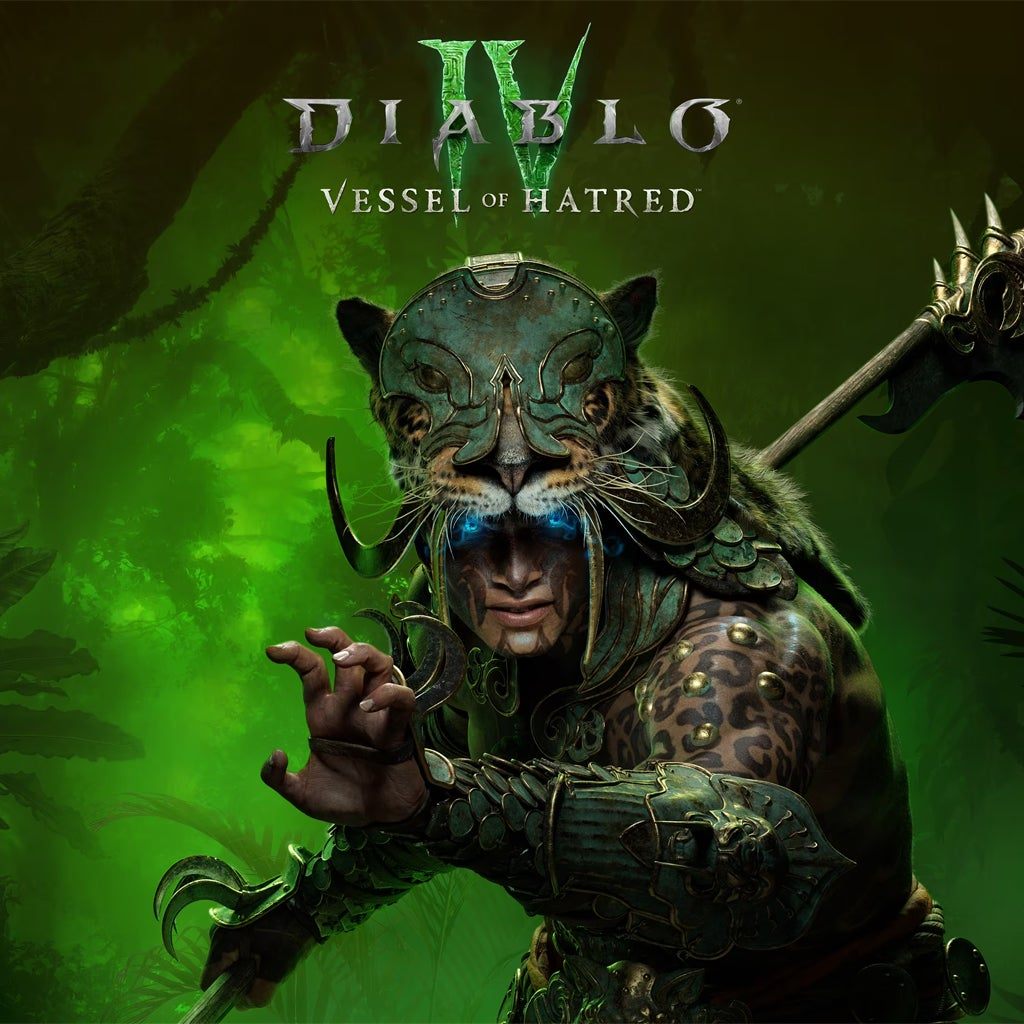Key Highlights
- New Spiritborn Class: The Vessel of Hatred expansion introduces the highly modular Spiritborn class, allowing you to mix abilities from four different animal spirits.
- Journey to Nahantu: Explore the new jungle region of Nahantu, a visually stunning but thematically familiar zone that expands the Diablo IV world map.
- Engaging Endgame Content: Blizzard Entertainment adds the Dark Citadel, a co-op raid-like activity, and new mercenaries to assist you in your demon-slaying.
- Narrative Disappointment: The main storyline continues the hunt for Neyrelle but ends on an unsatisfying cliffhanger, feeling more like a prologue than a complete chapter.
- Core System Overhauls: Experience significant quality-of-life changes, including a revised leveling system, the return of Runewords, and a new Party Finder feature.
Introduction
Diablo IV was a monumental release, and its first expansion, Vessel of Hatred, has arrived with towering expectations. This isn’t just a content drop; it’s a fundamental shake-up of the core experience, introducing everything from a new class to foundational changes in progression. Throughout our extensive review period, we explored every murky jungle and new gameplay system to determine if this expansion elevates the already excellent ARPG or falls short of its immense potential. Does this new chapter deliver the satisfying continuation you’ve been waiting for?
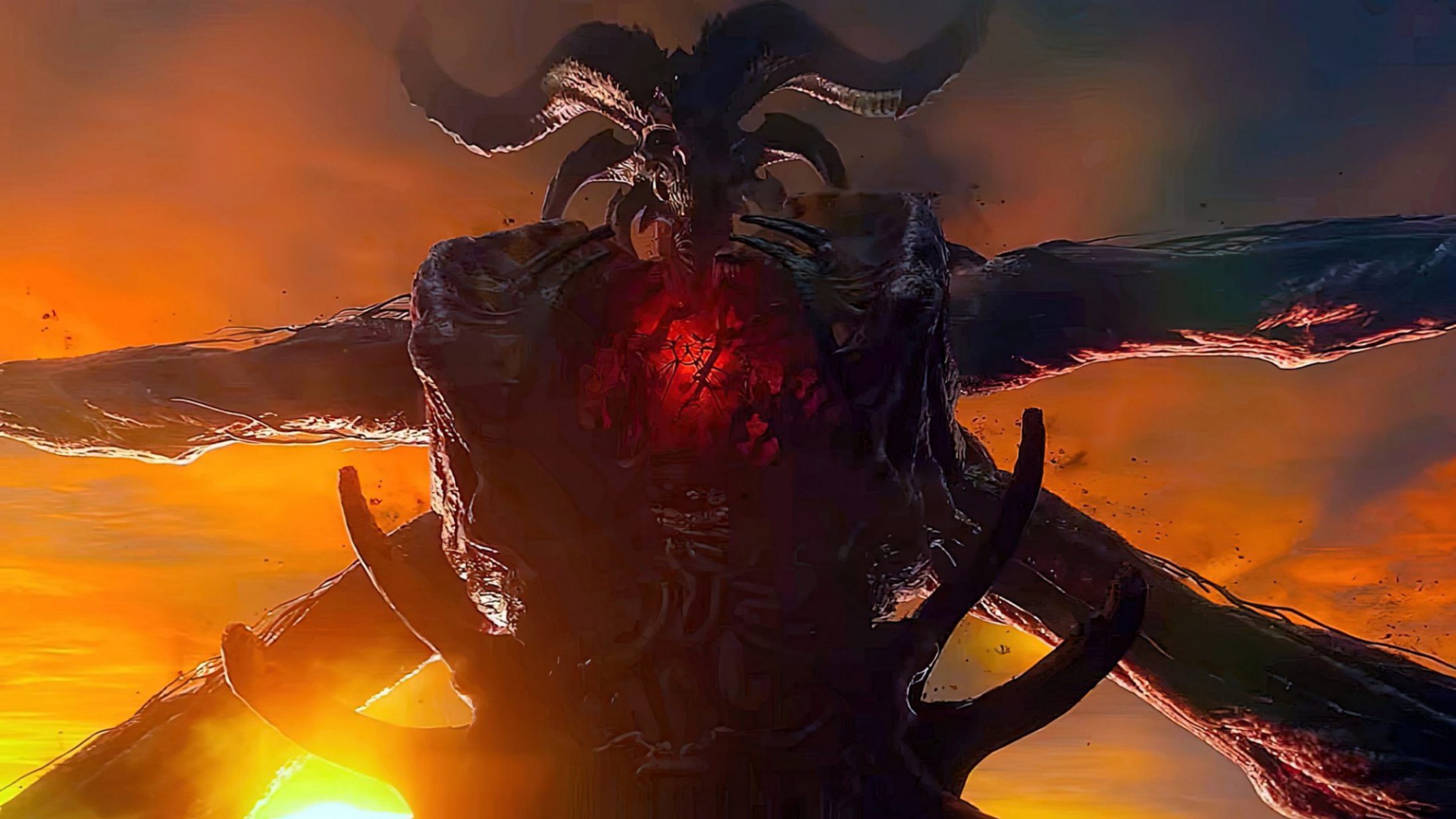
Exploring Diablo IV: Vessel of Hatred Expansion
The Vessel of Hatred expansion takes you on a journey to the new region of Nahantu, a dense and dangerous jungle where the story of Neyrelle and Mephisto continues. This addition to Diablo IV is more than just a new map; it’s interwoven with the Season of Hatred, bringing fresh activities and challenges to Sanctuary.
But what truly defines this expansion are the systemic changes that ripple through the entire game. From a completely new class to endgame raids and companion systems, Vessel of Hatred aims to redefine how you play. Let’s examine what truly distinguishes this new content from the original experience and how its gameplay feels in practice.
What Sets Vessel of Hatred Apart from the Base Game
While the base game established a solid foundation, Vessel of Hatred builds upon it with transformative changes. The development team at Blizzard has clearly listened to player feedback, implementing significant overhauls that address some of the original’s pacing issues and add new layers to buildcrafting.
The most impactful changes go beyond new content, fundamentally altering the progression loop. You’ll find that the journey to the endgame feels faster and more rewarding, thanks to a revised leveling system. This expansion also marks the return of a fan-favorite feature, Runewords, adding another dimension of customization to your gear.
Key differences from the base game include:
- Revised Leveling: The character level cap is now 60, pushing you into the expanded Paragon system (now up to 300 levels) much faster.
- New Paragon Board: Each class receives a new Paragon board with a powerful legendary node, offering fresh build possibilities.
- Return of Runewords: Combine Ritual and Invocation runes to add powerful conditional effects to your abilities.
First Impressions and Gameplay Dynamics
From the moment you step into Nahantu, the gameplay feels both familiar and refreshed. The core combat of Diablo IV remains as slick and satisfying as ever, but Vessel of Hatred introduces subtle enhancements and major quality of life improvements that make a noticeable difference. The addition of a Party Finder, for example, is a long-overdue feature that finally makes grouping up for activities seamless.
The new zone brings with it a host of new enemies to slay, though the variety could be greater. The true draw lies in the updated systems surrounding combat. The loot grind feels more focused, especially with the introduction of Runewords and a revamped endgame structure. Timed dungeons like the Kurast Undercity provide a frantic and rewarding challenge that requires efficient, powerful builds.
Ultimately, your initial hours in the expansion are a whirlwind of new mechanics to master and systems to explore. The experience is incredibly polished, making it easy to lose hours popping demons and tinkering with builds. For existing players, the wealth of new content and system refinements makes a compelling case for returning to Sanctuary.
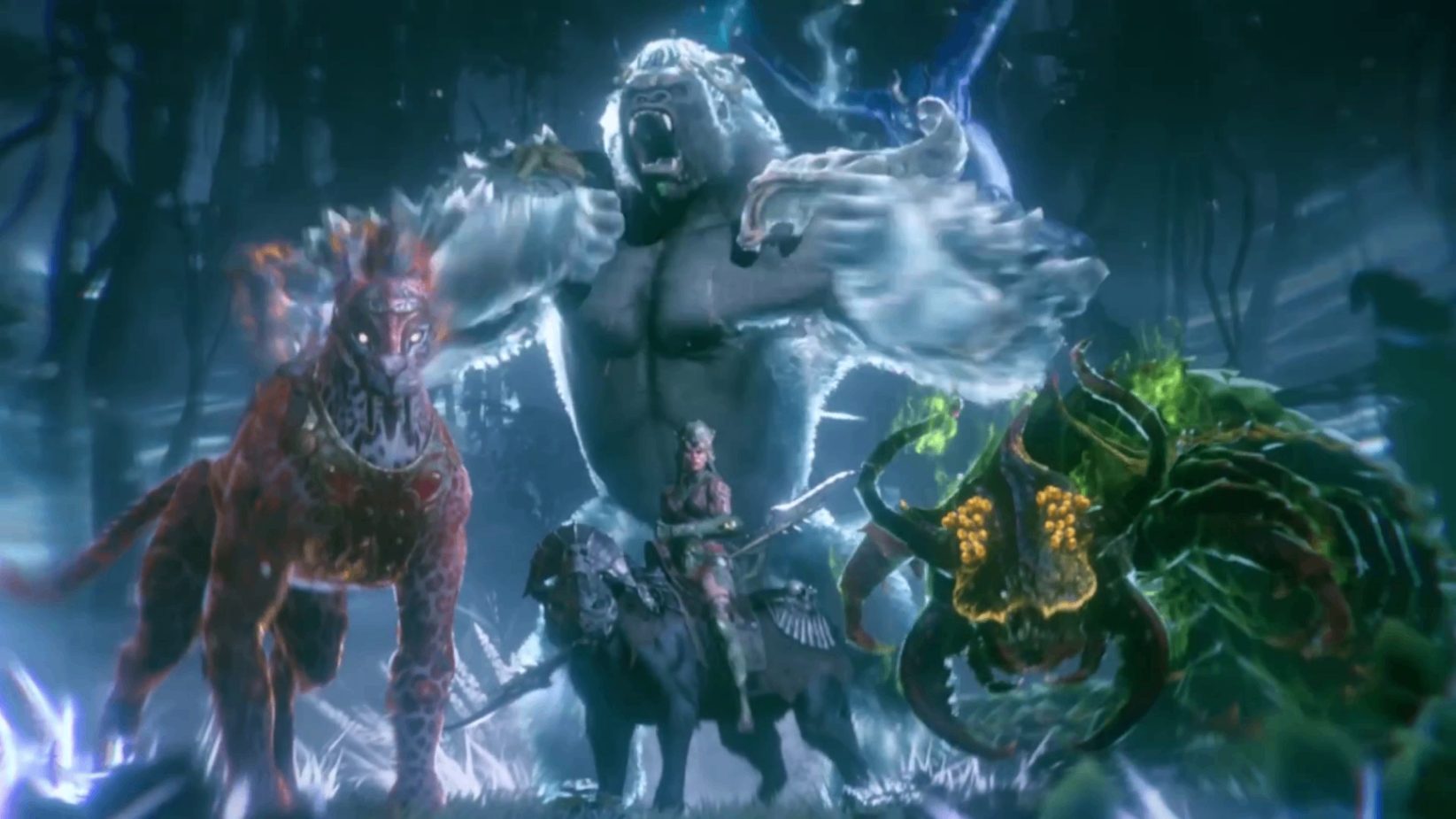
The Spiritborn Class: New Opportunities for Players
Perhaps the most significant addition in Vessel of Hatred is the new Spiritborn class. This new character class is a tribal warrior from the jungles of Nahantu, drawing power from ethereal spirit guardians to vanquish foes. It stands apart from the base game classes with its unique, highly flexible design that offers a fresh way to experience the world of Sanctuary.
The introduction of the Spiritborn class isn’t just about adding another hero to the roster; it’s about introducing a new philosophy of buildcrafting. This class gives you unprecedented freedom to mix and match abilities, fundamentally changing how you can approach character progression and combat encounters.
Unique Abilities and Playstyle
The Spiritborn class is defined by its modularity, enabling you to channel four different animal spirits, each with distinct abilities and playstyles. You are not locked into one path; instead, you are encouraged to combine skills from different spirits to create a truly custom build. This flexibility is the class’s greatest strength.
This design makes the leveling process incredibly engaging, as you can constantly experiment with new combinations. Whether you want to be a resilient tank, a swift damage-dealer, or a master of poison, the Spiritborn offers the tools to do it all. The class excels at adapting to different challenges on the fly.
The four spirit guardians offer the following playstyles:
- Gorilla: A brutish tank that focuses on soaking damage and punishing attackers.
- Jaguar: A lightning-fast melee DPS that sacrifices durability for raw, fiery power.
- Eagle: A master of mobility, allowing you to teleport across the battlefield and evade attacks.
- Centipede: A poison and lifesteal specialist that weakens enemies and offers incredible self-sustain.
How Spiritborn Changes the Game Strategy
The arrival of this new character class significantly alters the strategic landscape of Diablo IV. The Spiritborn’s adaptable nature provides a stark contrast to the more specialized roles of the original classes. While a Barbarian is laser-focused on berserking and a Sorcerer on elemental magic, the Spiritborn can pivot from a tanky build to a glass cannon with a simple respec.
This flexibility introduces a new layer to team composition and solo gameplay. Some reviewers noted that the class feels similar in theme to the Druid, but its execution—channeling spirits rather than transforming—gives it a distinct feel. The strategy is less about committing to a single role and more about building a hybrid that suits your personal playstyle.
However, during the review period, some balancing issues were apparent. Certain spirit skills, like the Eagle’s Quill Volley, felt significantly more powerful than others, even without upgrades. While these issues will likely be tuned post-launch, it highlights the challenge of balancing such a versatile class.
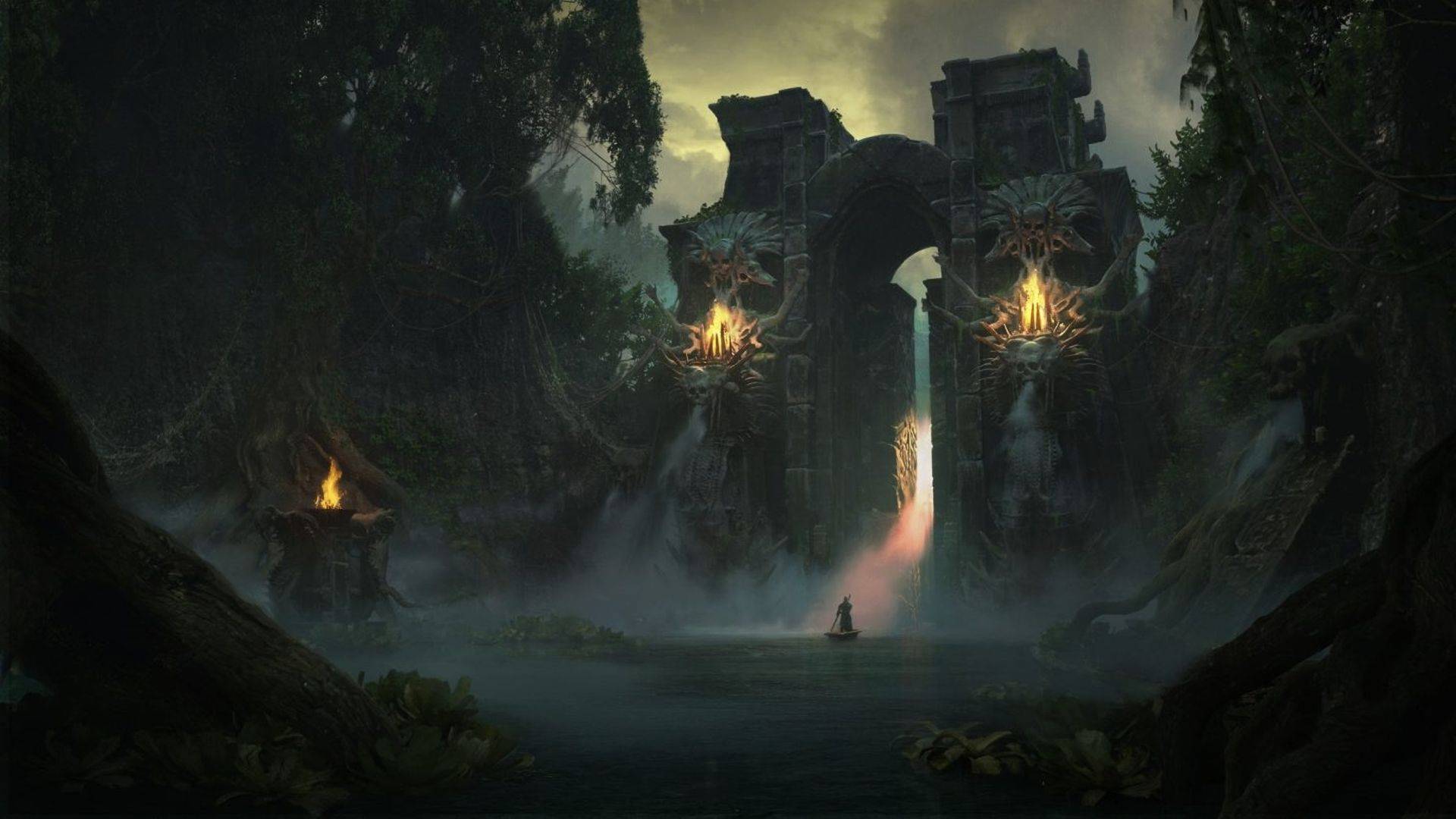
Journey Through Nahantu: Setting, Environment, and Atmosphere
Vessel of Hatred expands the world of Diablo by adding the southern jungle region of Nahantu. This new zone plunges you into a grimly gorgeous landscape of dense rainforests, ancient ziggurats, and festering swamps. As you traverse this part of Sanctuary, you’ll discover new towns, strongholds, and dungeons teeming with demonic threats.
The atmosphere in Nahantu is thick with malignancy, but it’s also a visual spectacle. The environment itself plays a role in your adventure, with new enemy types and potential environmental hazards lurking in the shadows. Let’s explore the region’s stunning world design and how its unique challenges impact your gameplay.
Visuals and World Design
The visuals and world design of Nahantu are a standout feature of the expansion. Blizzard’s art team has crafted a beautiful yet oppressive environment, where lush jungle vines spill over time-worn stone and mesoamerican-inspired mosaics hint at a forgotten history. Played on hardware like the Xbox Series X, the region is a technical showcase of lighting, texture work, and atmospheric detail.
As you hunt for Neyrelle and contend with the zealous remnants of the Cathedral of Light, you’ll also revisit iconic locations from Diablo II, such as Kurast and Travincal, now seen decades later. This blend of new and old adds a layer of nostalgia to the exploration, grounding Nahantu within the larger series lore.
The zone is divided into several distinct biomes, each with its own aesthetic. While the core look is “dingy jungle filled with blood and monsters,” the variety within that theme is impressive, creating a believable and immersive new piece of Sanctuary.
|
Biome/Area |
Key Visual Characteristics |
|---|---|
|
Kurast Jungles |
Dense foliage, towering trees, ancient overgrown ruins, and murky waterways. |
|
Teganze Desert |
A drier, more arid section of Nahantu, contrasting with the lush jungles. |
|
Ziggurats & Temples |
Mesoamerican-inspired stone architecture, slick with age and demonic corruption. |
|
Swamps |
Festering marshlands filled with grotesque flora and deep, dark water. |
Environmental Hazards and Their Impact on Play
While Nahantu doesn’t introduce many overt environmental hazards like traps, its design inherently affects gameplay. The dense, multi-layered jungles can create chaotic combat arenas, with enemies attacking from obscured sightlines. The real threat comes from the new fauna and demonic entities native to the region.
The design of these new enemies is closely tied to the themes of the Spiritborn class, with creatures that evoke the power of the jaguar, gorilla, eagle, and centipede. Fighting a swarm of poisonous insects in a narrow temple corridor or a hulking ape-like beast in an open clearing requires different tactical approaches, adding a fresh dynamic to combat encounters.
The environment’s impact is more atmospheric than mechanical, but it successfully enhances the feeling of venturing into a dangerous, untamed land.
- New Enemy Types: The region is populated with new monsters that, while not incredibly diverse, fit the jungle theme perfectly.
- Terrain Variety: Fights can take place in wide-open spaces or claustrophobic ruins, forcing you to adapt your strategy.
- Atmospheric Storytelling: The environment is littered with signs of demonic corruption and the tragic history of the local tribes.
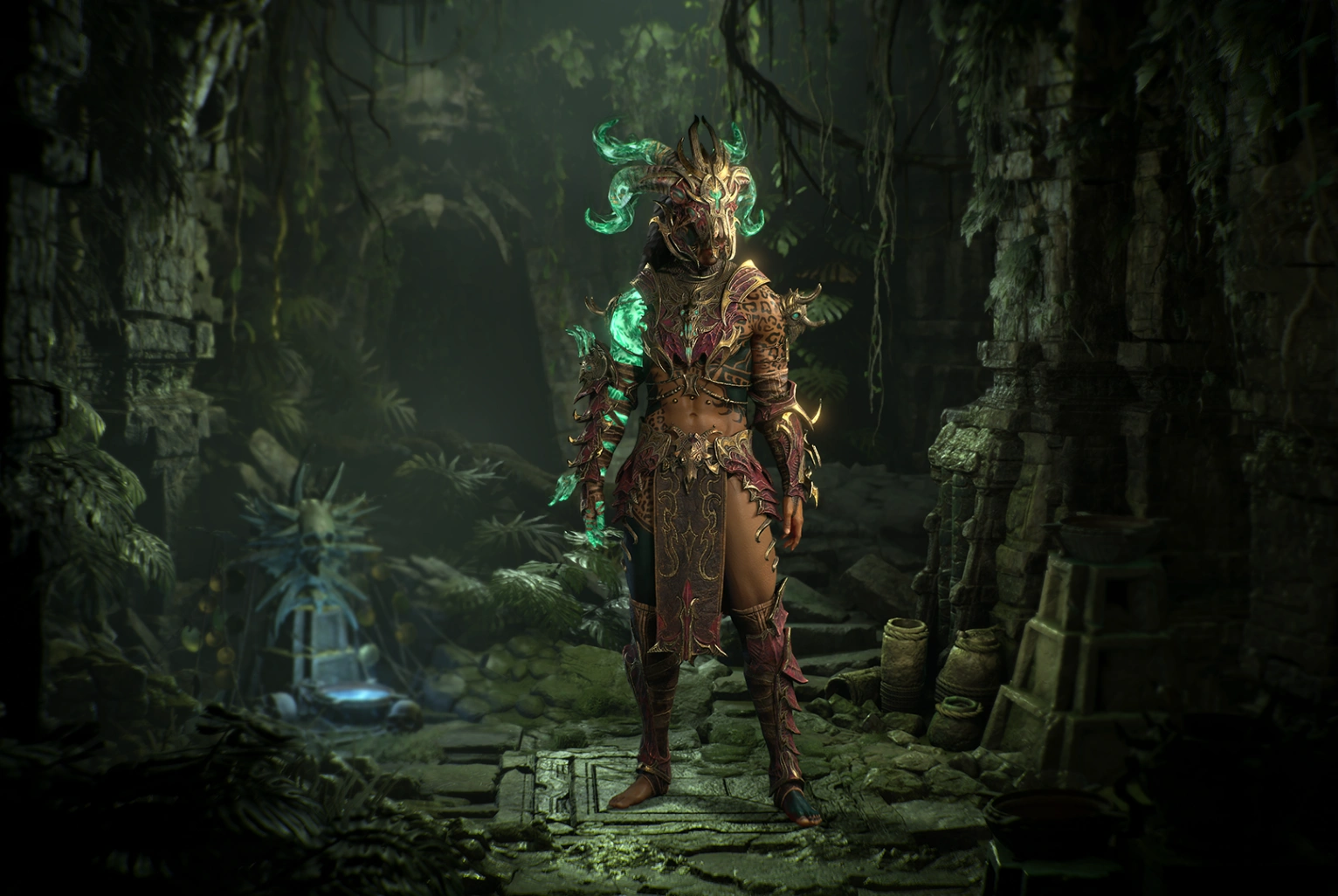
Storyline and Narrative Impact
The central narrative of Vessel of Hatred picks up right after the cliffhanger end of Diablo IV’s main campaign, following Neyrelle as she flees with Mephisto’s soulstone. The storyline promises a dark and desperate hunt through the jungles of Nahantu, exploring the heavy toll the demon’s influence is taking on the young hero.
However, many reviewers found the story to be the expansion’s weakest element. While the opening is enthralling, the pacing quickly unravels, leading to a rushed and unsatisfying conclusion that feels more like a setup for future content than a complete arc. This makes the story of Diablo IV feel like it’s treading water, leaving you with yet another frustrating cliffhanger.
Key Plot Points and Emotional Themes
The storyline of Vessel of Hatred centers on Neyrelle’s desperate struggle to contain Mephisto, the Lord of Hatred, who is slowly consuming her from within. Your character pursues her into Nahantu, aided by new local allies, while also being hunted by a fanatical Cathedral of Light zealot named Urivar.
The primary emotional themes revolve around pain, sacrifice, and the corrupting nature of power. The game frequently hammers home the grim, nihilistic tone of the Diablo universe, where good intentions often lead to horrific outcomes. However, some moments of brightness and friendship offer a brief respite from the overwhelming darkness.
Unfortunately, the plot progression feels unearned. Major developments are often rushed, and your character’s agency is repeatedly undermined by cutscenes where your hard-fought victories are rendered meaningless. This can be maddening, especially as the story builds toward a predictable and abrupt end that snuffs out interesting plot threads to save them for later.
Vessel of Hatred’s Role in the Larger Diablo Universe
It becomes clear during the review period that Vessel of Hatred is positioned as an interlude rather than a self-contained chapter in the world of Diablo. The expansion functions as a prologue for a much larger adventure, dedicating most of its narrative energy to setting up dominos that it has no intention of knocking down.
This approach makes the $40 price tag a point of contention for story-focused players. Instead of providing answers, it raises more questions and leaves you hanging. Blizzard Entertainment has confirmed this is part of a longer-term plan, with Ains from Seasoned Gaming noting, “…it’s worth recognizing this is part of the larger plan for Diablo 4 as the story development will continue in future seasons and expansions (confirmed by Blizzard directly in our reviewer AMA).”
While this forward-looking strategy may pay off eventually, it leaves Vessel of Hatred feeling narratively incomplete. It expands the world and introduces key players but withholds any meaningful payoff, asking you to wait for the next paid expansion or seasonal update for resolution.
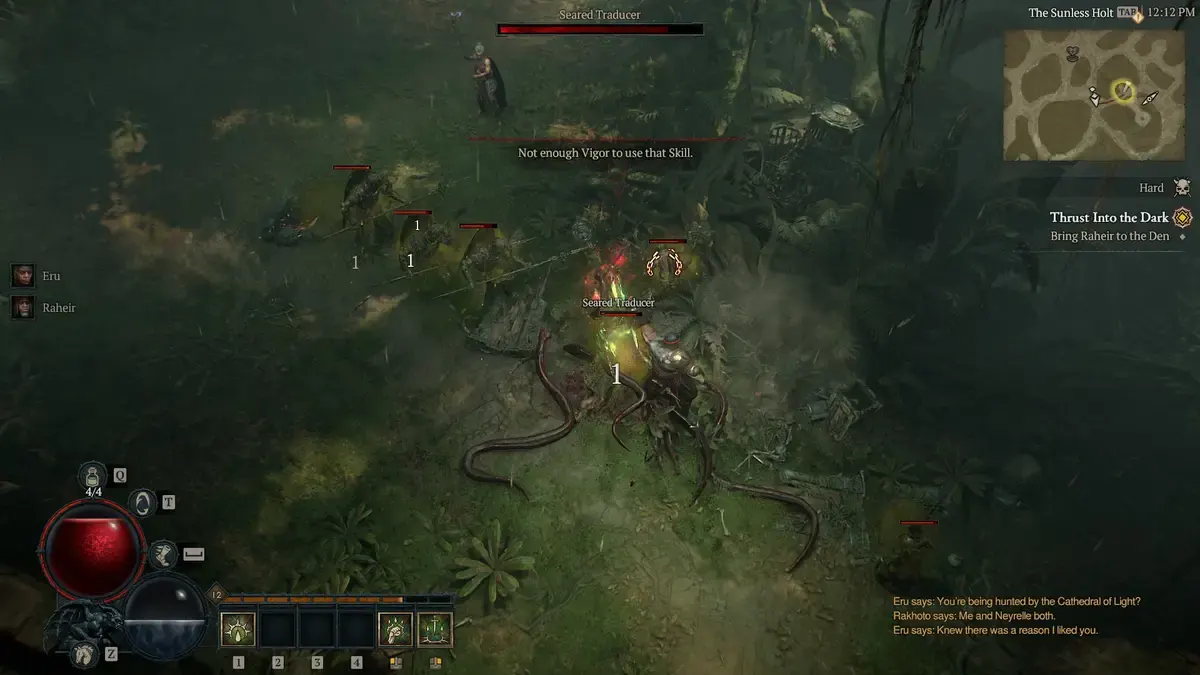
Multiplayer Experiences and Cooperative Gameplay
Vessel of Hatred significantly enhances multiplayer and cooperative gameplay with several key additions. The headline feature is the Dark Citadel, the series’ first raid-like activity, designed as a true test of teamwork. This challenging endgame content demands coordination and strategy, pushing group play to the forefront.
To support these new group challenges, Blizzard has finally implemented robust social features, including a much-needed Party Finder. These additions make it easier than ever to team up and tackle the toughest content Sanctuary has to offer, from raids to world bosses. We will now explore these features and the updated PvP and endgame loop in more detail.
Group Challenges and Social Features
The premier group challenge is the Dark Citadel, an endgame co-op dungeon that requires a party to split up and tackle puzzles and bosses simultaneously. While the mechanics are described as straightforward, successfully coordinating with your team to take down powerful foes is some of the most fun to be had in Diablo IV across Xbox, PlayStation, and PC.
For solo players, the new mercenaries system provides a form of cooperative play. You can recruit one of four unique NPC companions who have their own skill trees and will fight alongside you. This is a fantastic addition that helps even the odds without needing to group up with other players.
To facilitate all this, the expansion introduces crucial social features:
- Party Finder: An in-game tool to easily find groups for specific activities, world tiers, and gameplay preferences.
- Marker System: A new ping system to improve non-verbal communication and coordination during challenging encounters like the Dark Citadel.
- Mercenary System: Four companions to recruit, level up, and customize, adding depth for both solo and group players.
PVP and Endgame Content Updates
While the expansion doesn’t introduce new dedicated PvP modes, the wealth of new endgame content provides a richer playground for all players. The Pit returns, offering tiered challenges that are essential for unlocking the highest Torment difficulties. A standout addition is the Kurast Undercity, a timed rift-style dungeon perfect for farming loot and testing build efficiency.
The overarching systems have also been refined. The rework of gems and the reintroduction of Runewords add new layers to gear optimization, giving you more ways to perfect your build for any activity, including PvP encounters. The new mercenaries can’t join you in PvP zones, but their utility in farming gear elsewhere is invaluable.
These updates, combined with the activities from the Season of Hatred, create a more robust and varied endgame loop. The focus is clearly on PvE, but the systemic improvements benefit every aspect of the game, ensuring there are always meaningful challenges to overcome and powerful rewards to chase.
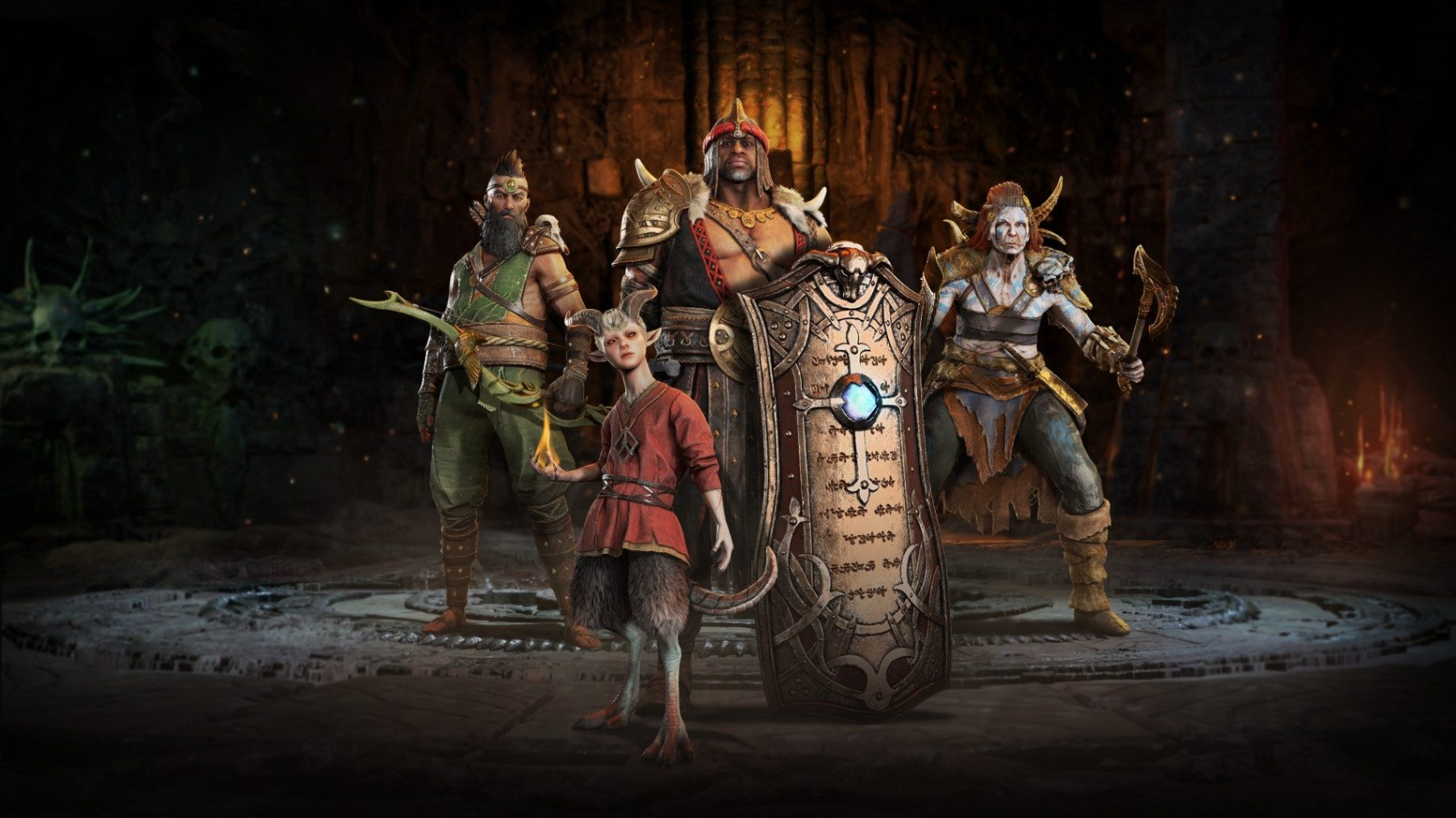
Conclusion
In conclusion, “Diablo IV: Vessel of Hatred” stands as a powerful expansion that elevates the core gaming experience with new strategic opportunities, captivating storylines, and immersive environments. The introduction of the Spiritborn class redefines gameplay dynamics, enticing both new and veteran players to explore its unique abilities. The richly designed world of Nahantu enhances not just visual pleasure but also offers environmental challenges that demand tactical gameplay. As you navigate its emotional narrative and engage in cooperative multiplayer experiences, Vessel of Hatred proves to be a worthy addition to the Diablo universe. If you’re contemplating whether to dive into this expansion, don’t hesitate—your adventure awaits in the depths of darkness!
Frequently Asked Questions
Is Vessel of Hatred worth buying for existing Diablo IV players?
Yes, according to this reviewer, Vessel of Hatred is worth it for gameplay-focused Diablo IV players on Xbox, PC, and PlayStation. The new class, endgame content, and system overhauls are fantastic, though the story may disappoint those seeking a complete narrative.
What new features does Vessel of Hatred introduce?
Vessel of Hatred introduces the new region of Nahantu, the flexible Spiritborn class, a system of new mercenaries, a co-op raid called the Dark Citadel, Runewords, and new activities tied to the Season of Hatred.
How does Vessel of Hatred affect character progression and customization?
It heavily impacts progression by adding the highly customizable Spiritborn class and a new Paragon board for every class. The leveling system is also reworked with a cap of 60, accelerating the journey to the endgame and deep customization options.
